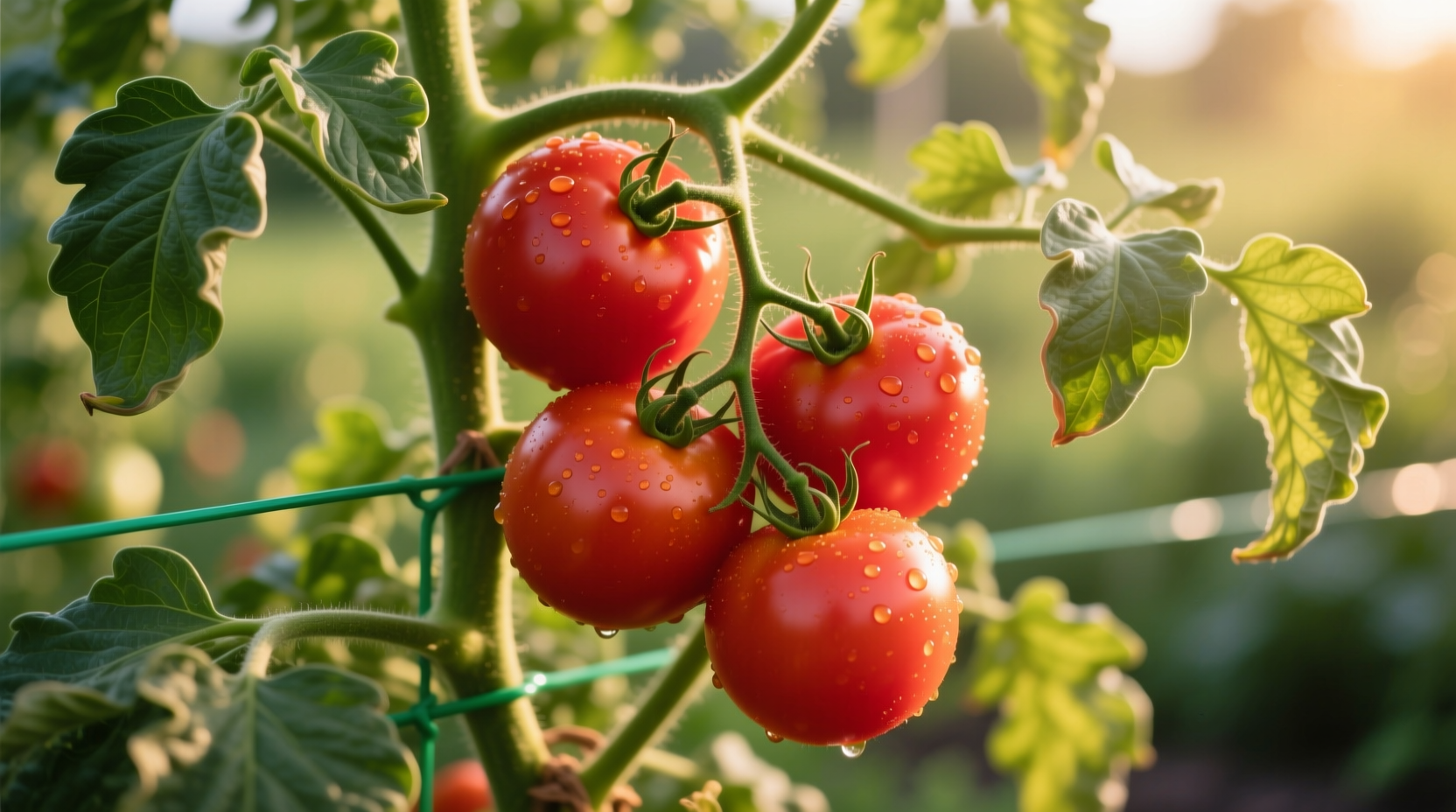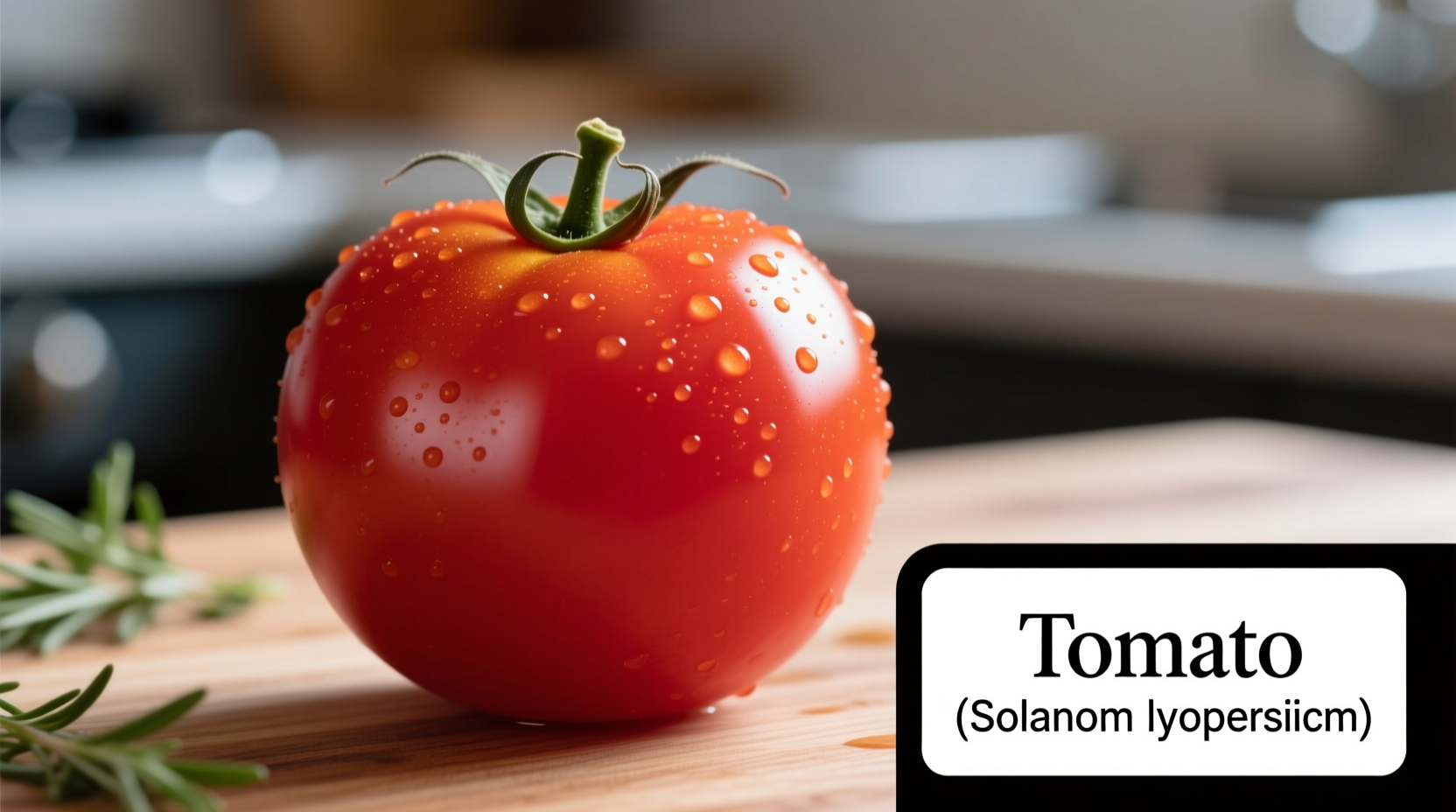Understanding the precise definition of a tomato resolves one of the most enduring food classification debates. This comprehensive guide clarifies the scientific reality, historical context, and practical implications of how we define this versatile produce item. You'll gain authoritative insights into why tomatoes occupy this unique botanical-culinary intersection and how this definition affects everything from cooking techniques to agricultural regulations.
The Botanical Reality: Why Tomatoes Are Scientifically Fruits
From a strict botanical perspective, tomatoes (Solanum lycopersicum) qualify as fruits because they develop from the flower's ovary after pollination and contain seeds. This classification places them alongside cucumbers, peppers, and eggplants in the berry category—despite common culinary perceptions.
Botanists at the USDA Agricultural Research Service confirm that tomatoes meet all scientific criteria for fruits, specifically categorized as "false berries" because they develop from compound ovaries. The defining characteristic is simple: any structure that carries seeds and develops from a flower's ovary qualifies as a fruit in botanical terms.
The Culinary Classification: Why Tomatoes Function as Vegetables
Chefs and home cooks universally treat tomatoes as vegetables due to their low sugar content (typically 2-3%) compared to sweet fruits like apples (10-15% sugar). This savory profile makes them ideal for sauces, salads, and main dishes rather than desserts.
The distinction became legally cemented in the 1893 U.S. Supreme Court case Nix v. Hedden, where tomatoes were classified as vegetables for tariff purposes. Justice Horace Gray's opinion stated: "Botanically speaking, tomatoes are the fruit of a vine, just as a cucumber, squash, and pea... But in the common language of the people... they are vegetables."

Tomato Varieties and Their Defining Characteristics
| Variety Type | Botanical Features | Common Culinary Use |
|---|---|---|
| Slicing Tomatoes | Large, round, 4-12 chambers | Burgers, sandwiches, fresh salads |
| Cherry Tomatoes | Small, spherical, 2 chambers | Snacking, salads, roasting |
| Roma Tomatoes | Elongated, dense flesh, fewer chambers | Sauces, canning, paste |
| Heirloom Tomatoes | Irregular shapes, diverse colors | Gourmet dishes, fresh preparations |
Historical Evolution of Tomato Classification
The journey of tomato classification reveals how cultural perceptions shape food definitions. Indigenous peoples in western South America first domesticated tomatoes around 500 BC. Spanish explorers introduced them to Europe in the 16th century, where they were initially grown as ornamental plants due to suspicions about their nightshade family relation.
Tomato Definition Timeline
- 1519-1522: Spanish conquistadors encounter tomatoes in Aztec markets
- 1544: First European botanical description by Pietro Andrea Mattioli
- 1753: Carl Linnaeus classifies tomato as Solanum lycopersicum
- 1883: U.S. Tariff Act sparks Nix v. Hedden legal case
- 1893: U.S. Supreme Court rules tomatoes are vegetables for tariff purposes
- 1987: European Union legally classifies tomatoes as fruits for agricultural purposes
Resolving the Fruit-Vegetable Paradox
The apparent contradiction between botanical and culinary classifications stems from fundamentally different classification systems. Botanical classification focuses on plant anatomy and reproductive structures, while culinary classification considers flavor profiles and usage patterns.
Tomato Classification: Fact vs. Misconception
| Common Belief | Scientific Reality | Source Verification |
|---|---|---|
| "Tomatoes are vegetables because they're not sweet" | Sweetness doesn't determine botanical classification; seed-bearing structures do | Encyclopedia Britannica |
| "The Supreme Court reclassified tomatoes botanically" | Court ruling applied only to tariff regulations, not scientific classification | Supreme Court Archives |
| "All fruits are sweet" | Many fruits (tomatoes, cucumbers, avocados) have low sugar content | USDA Food Composition Database |
Practical Implications of the Tomato Definition
Understanding the precise definition of tomatoes affects multiple aspects of food production and preparation:
- Nutritional labeling: Tomatoes' classification affects how they're categorized in dietary guidelines
- Agricultural regulations: Different rules apply to fruit vs. vegetable crops in many jurisdictions
- Culinary techniques: Knowing tomatoes are fruits explains their chemical behavior in cooking (e.g., acid content affecting pectin)
- Gardening practices: Tomato plants require different care than true vegetable plants
Food scientists at Cornell University note that recognizing tomatoes' botanical nature helps explain their ripening behavior—they produce ethylene gas like other fruits, which affects storage recommendations and companion planting strategies.
Global Perspectives on Tomato Classification
Cultural context significantly influences how tomatoes are categorized worldwide. In most European Union countries, tomatoes are legally classified as fruits for agricultural subsidy purposes, while in culinary contexts they're treated as vegetables. Japan's Ministry of Agriculture maintains separate categories for "fruit vegetables" that include tomatoes, eggplants, and cucumbers.
This dual classification system acknowledges the scientific reality while respecting culinary traditions—a practical approach that resolves the apparent contradiction for regulatory purposes.











 浙公网安备
33010002000092号
浙公网安备
33010002000092号 浙B2-20120091-4
浙B2-20120091-4